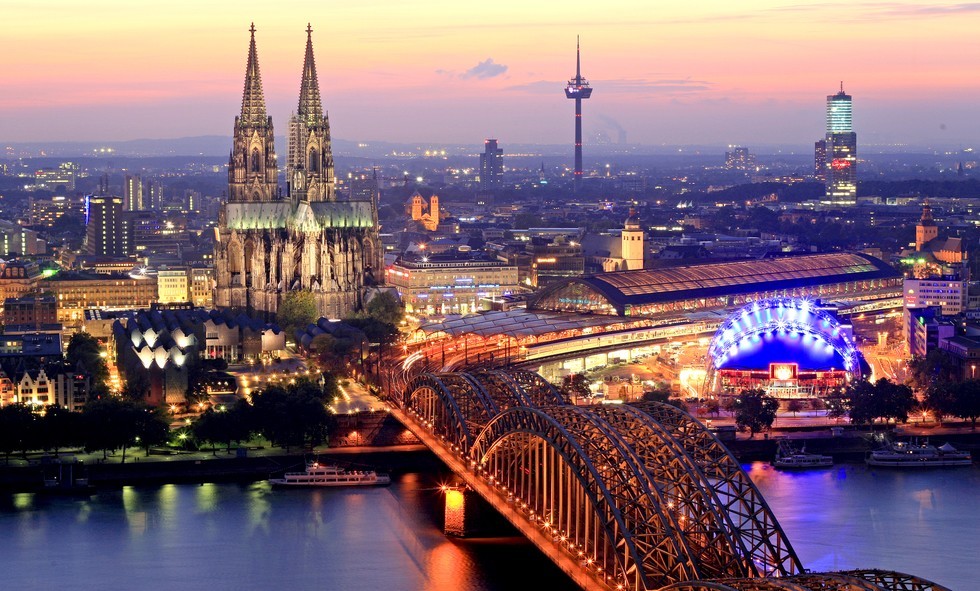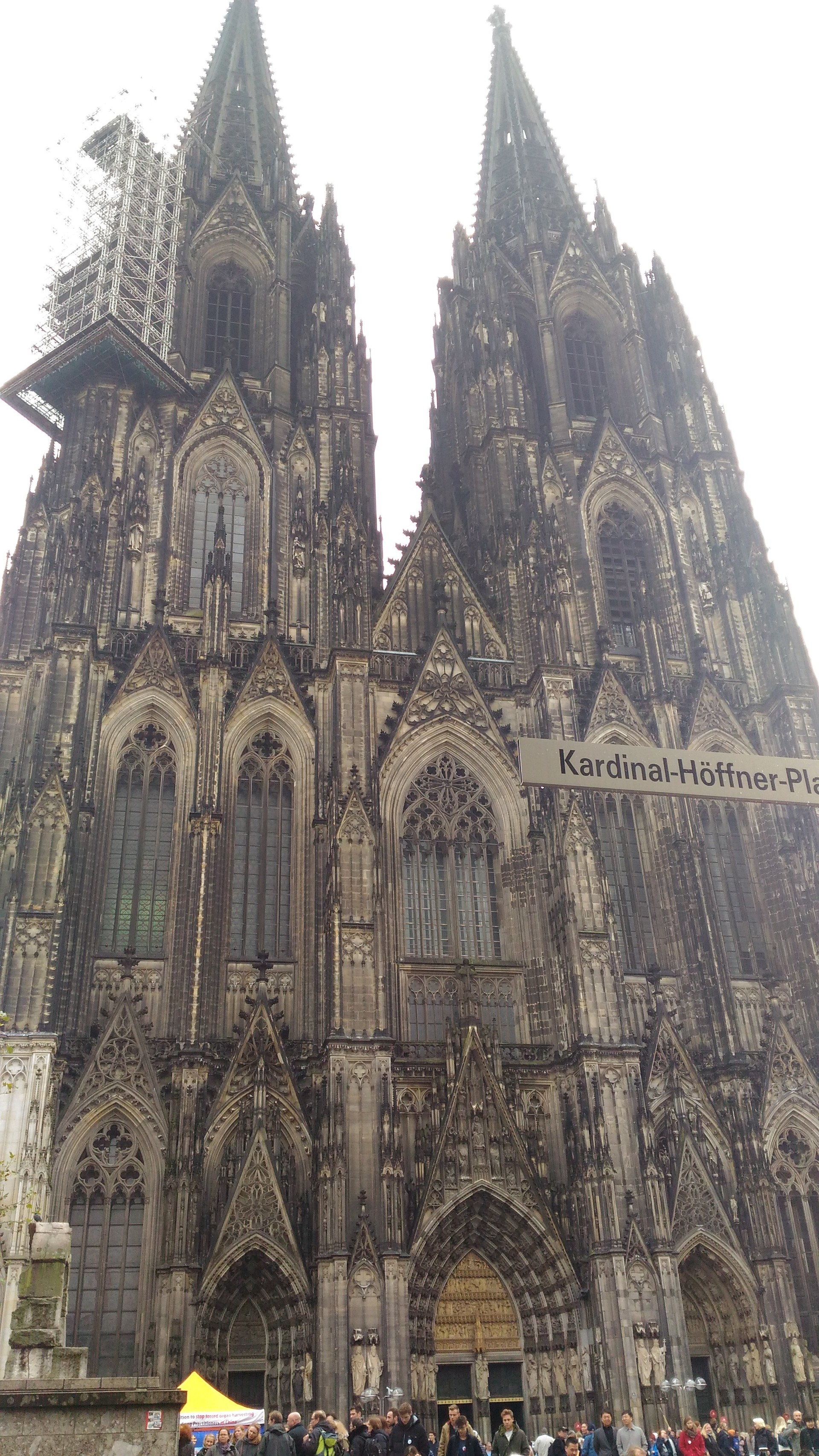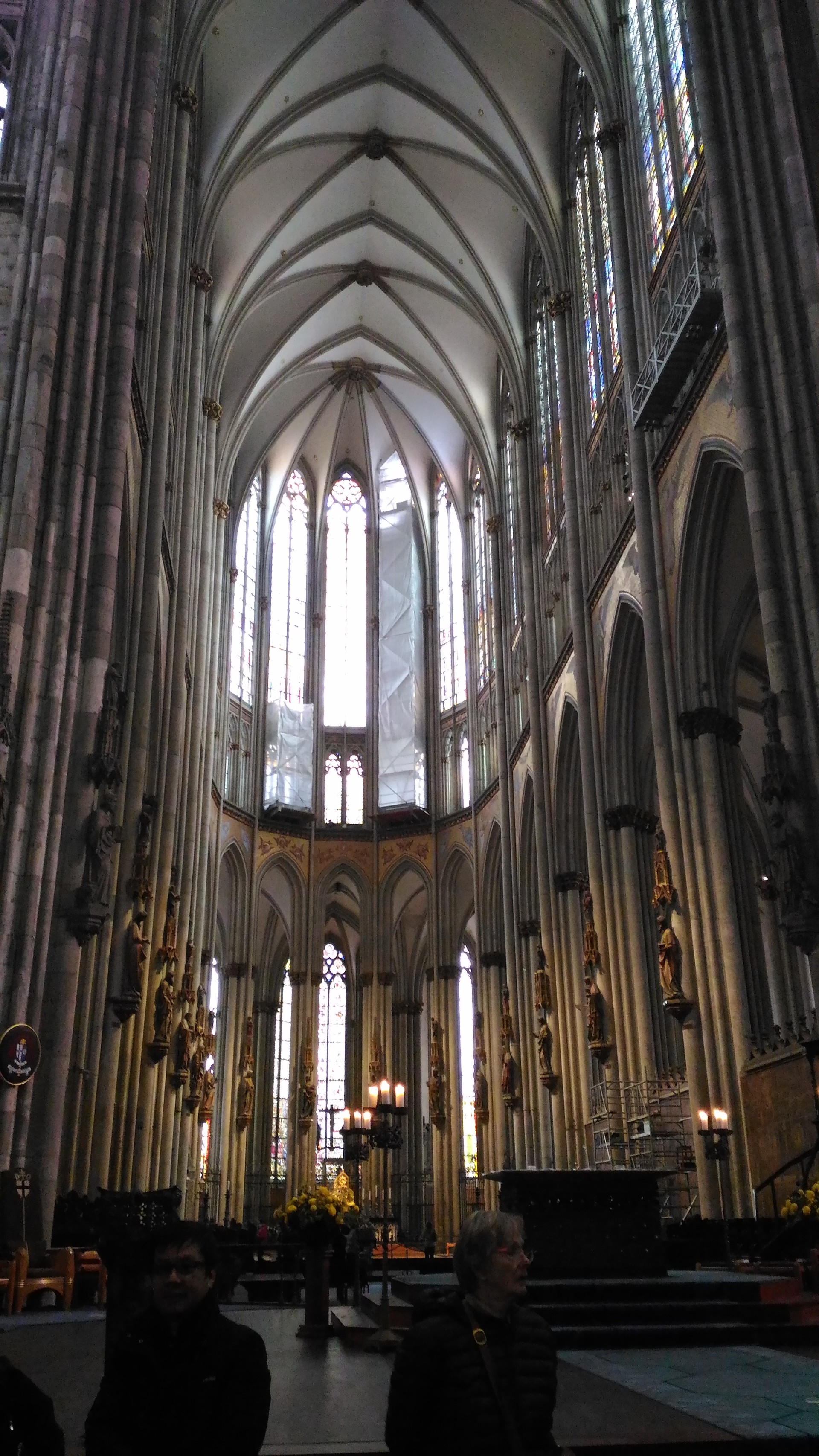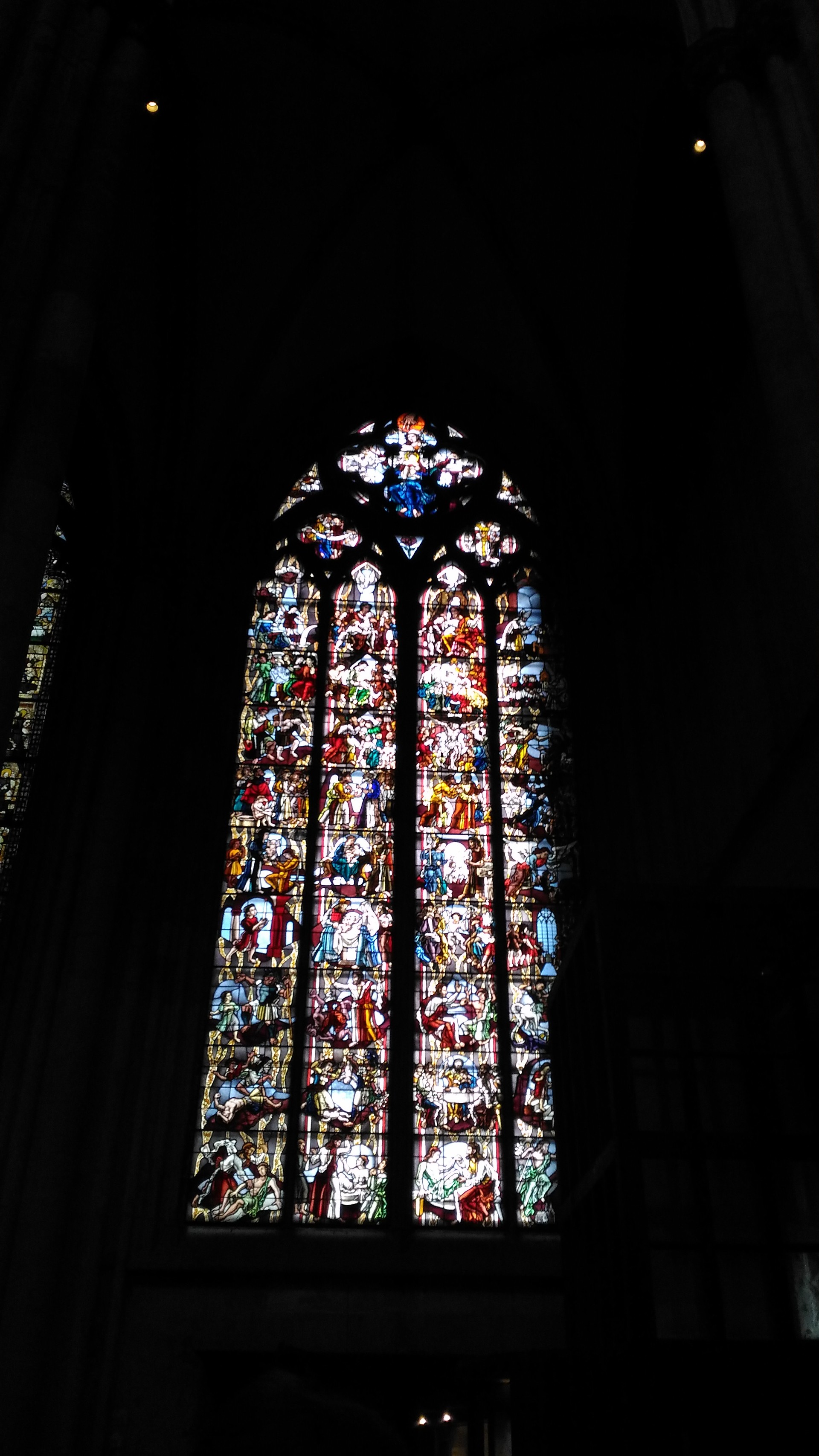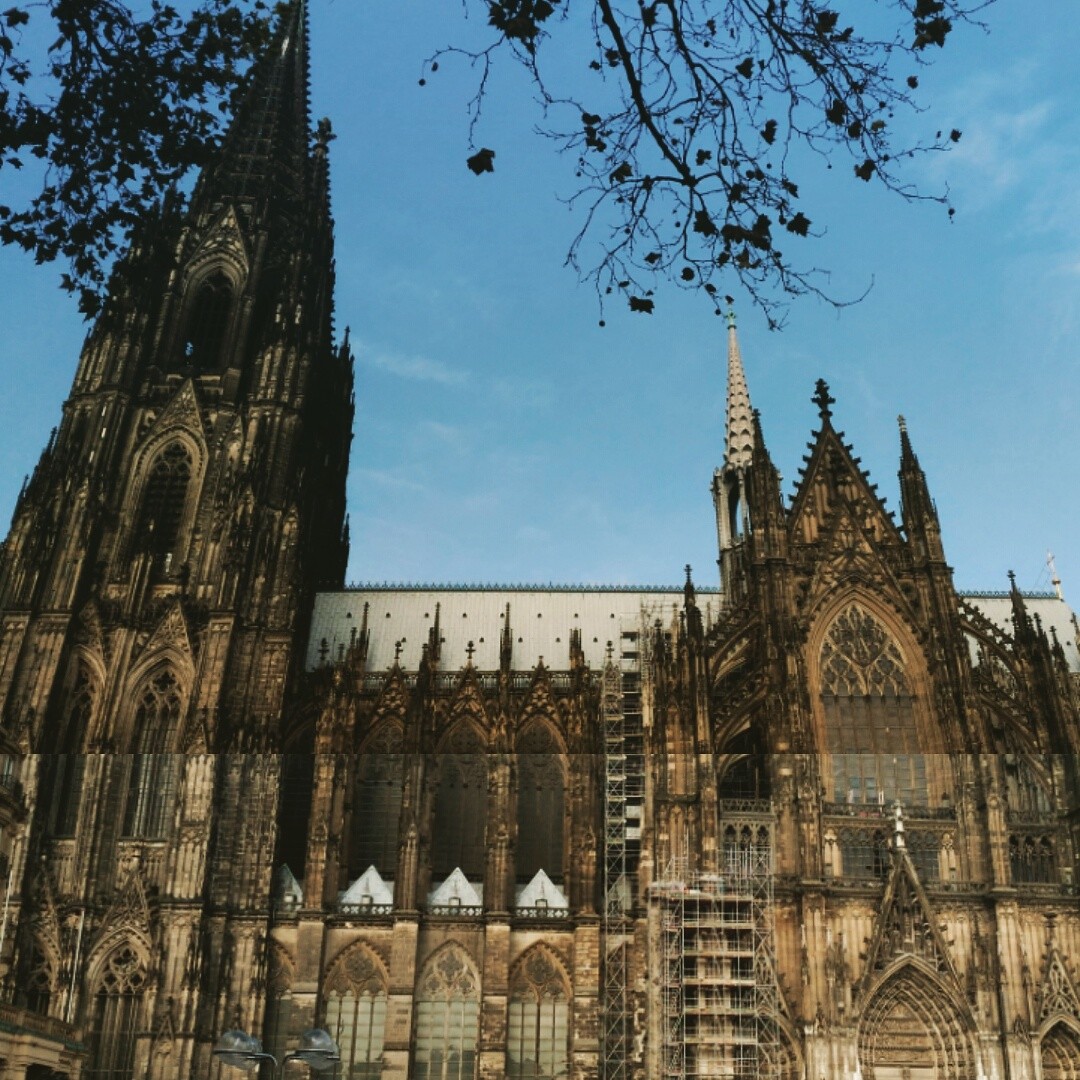Kölner Dom, the Cathedral of Cologne
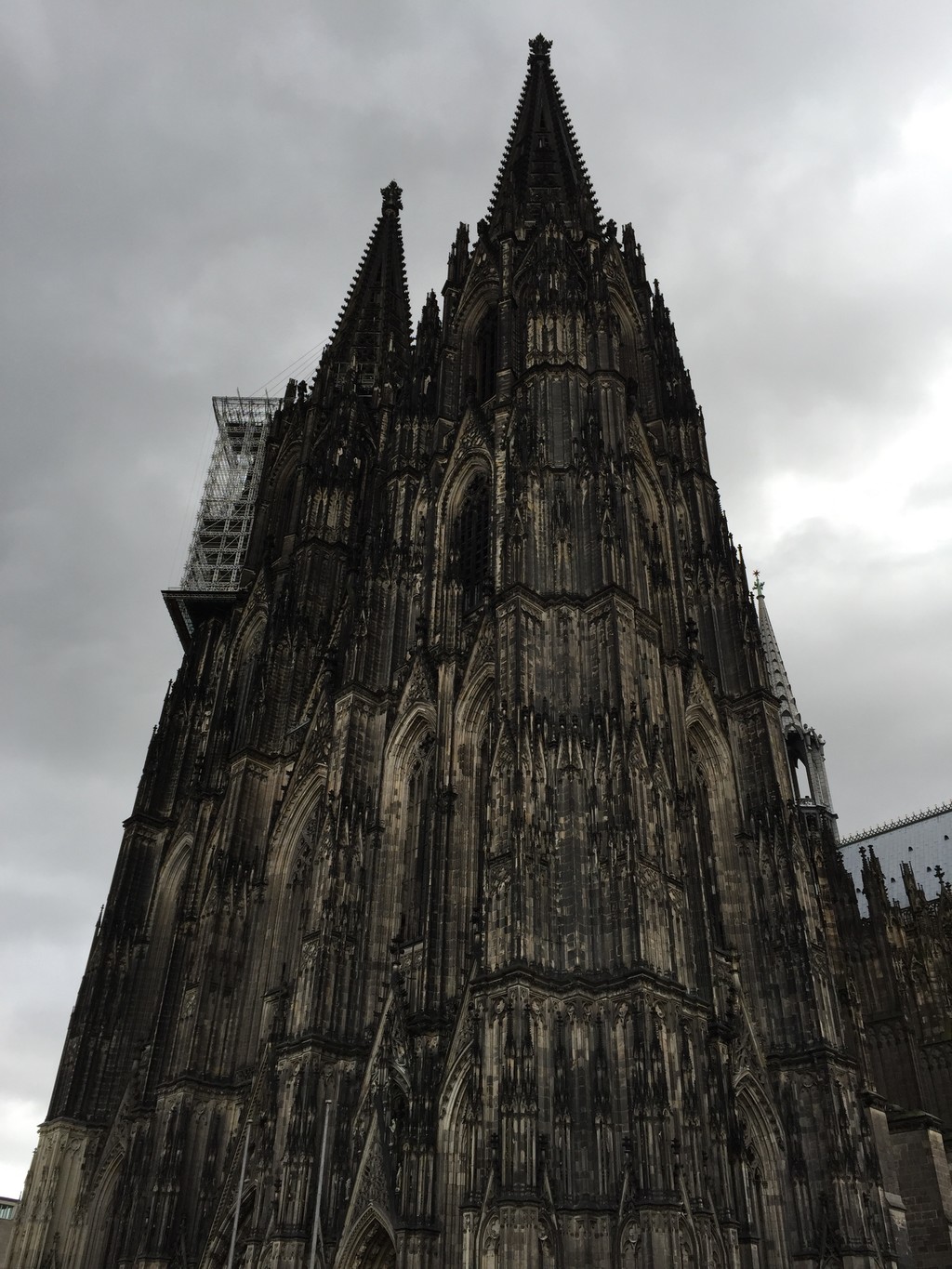
The Cathedral of Cologne or Kölner Dom in German (its full name being Cathedral of Saint Peter and Saint Mary) is one of the most impressive cathedrals in Europe, and, without a doubt, the most popular in the city.
It was built between 1248 and 1880 and was designed using the original plans, and is considered a masterpiece of gothic architecture.
The Cathedral became the biggest building in the world during the 19th Century, despite being unfinished. The design of the western front challenges any convention of architectonic style. It has a surface area of 7000 m2 and is surrounded by two towers, each at a height of 156m.
As an exceptional achievement of the Middle Ages, inside is home to the sanctuary of the Magic Kings' relics - the largest ones in the Occident. The Cathedral has two big triptychs: the Borrar of the 14th century with 36 pictures and 25 sculptures, created by Stephan Lochner, and the altar of the patrons of the city. The architecture dates back to the Middle Ages, and some phases of construction belong to the neo-gothic style.

The cathedral is regarded as the most visited monument in Germany, and, in 1996, it was declared a UNESCO World Heritage Site.
The excavations carried out after the Second World War brought some new information to light about this Cathedral. The first indications point out that it began as a Christian chuch just after the beginning of the 4th century. Midwaythrough that century, the choir of the small church was oriented towards the west and was enlarged, before setting up a further choir.
Around the year 800, after the new variations, the building was almost at a height of 100m.
In the 9th century, the church was entirely rebuilt to be 2m higher than its original height. The Cathedral was then 94. 9m tall.
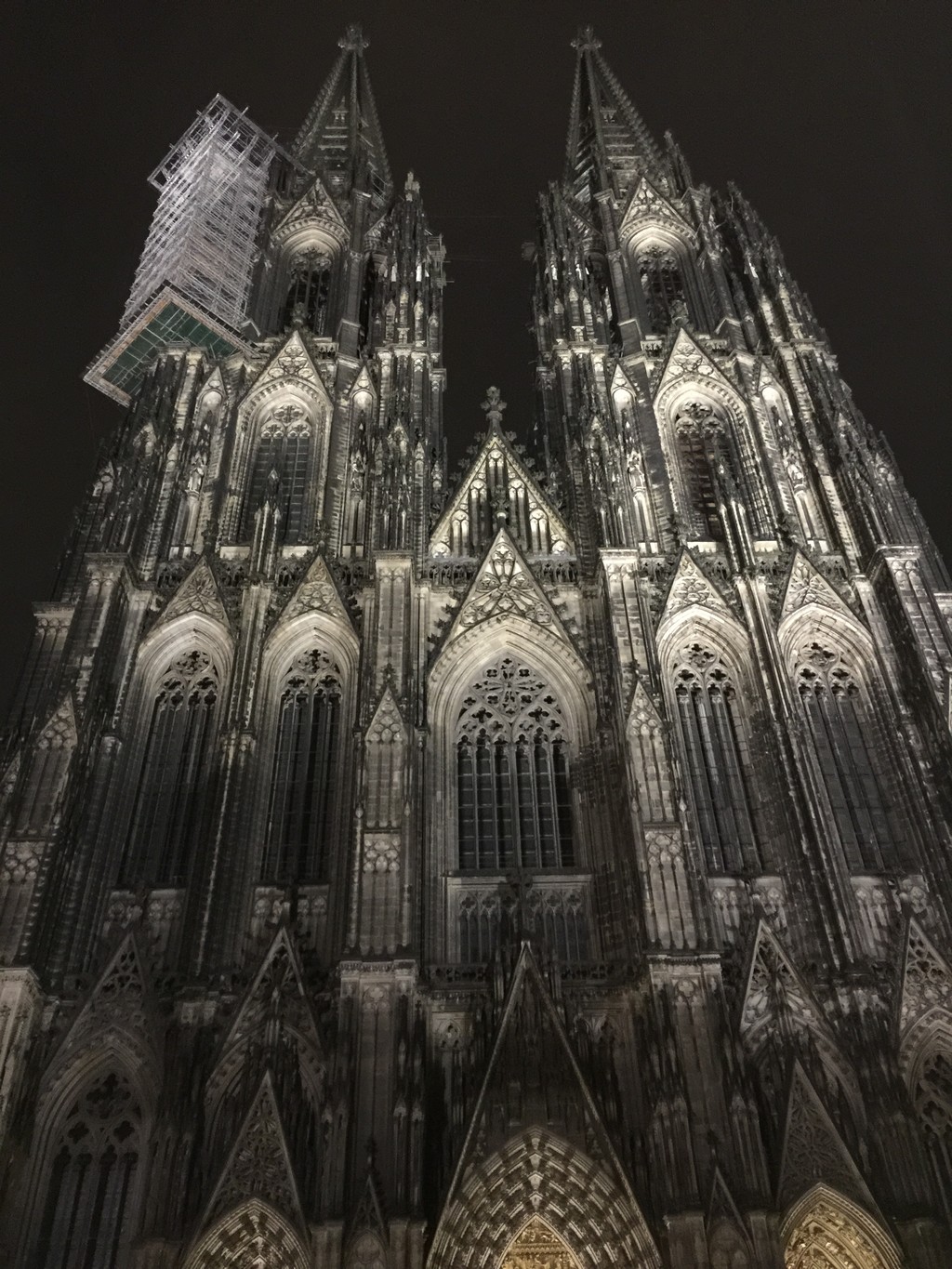
In 965, two outside corridors were added, and, in 1020, a two-storey chapel.
On August 15, 1248, the archbishop Konrad von Hochstaden laid the first stone of the new building; a project led by the architect Ferhard. Around 1265, the corridors and the choirs were already ready for use during worship.
In 1506, the southern corridors were rebuilt and new windows were put in. The nave was given a temporary roof, which meant that, in 1560, when the construction of the building was completed, at least 90% of the total area built already had roofing.
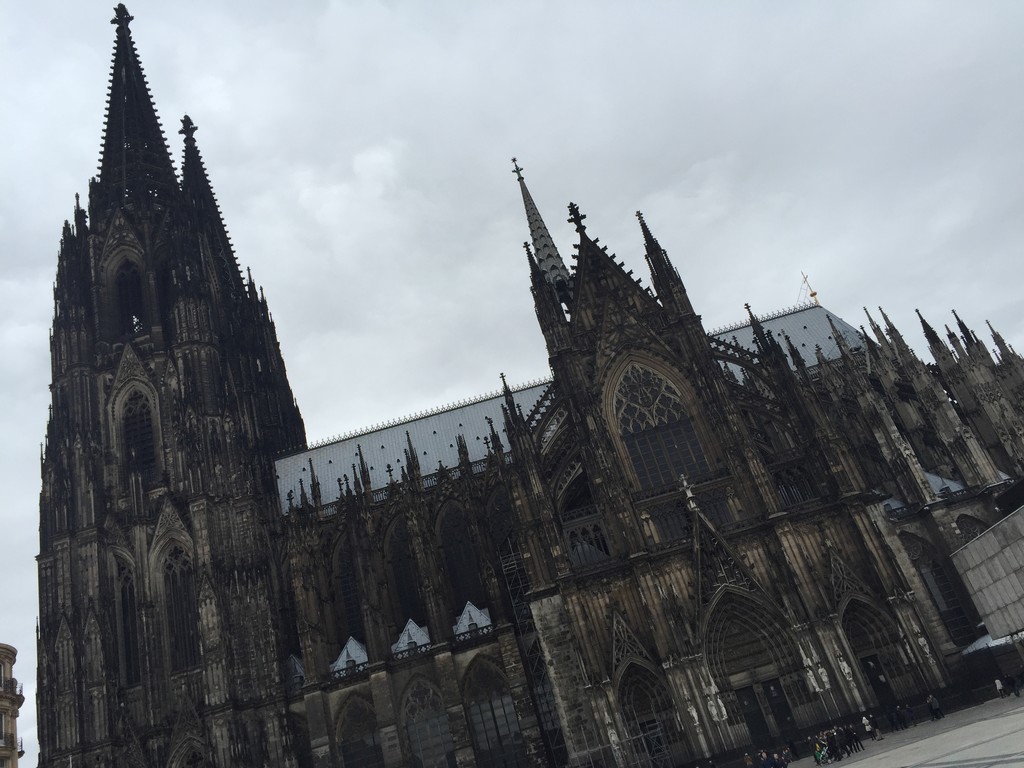
Work on the cathedral didn't resume until 1823. The interior was completed in 1863 with help of Frederic William IV of Prussia.
On October 15, 1880, the last stone was placed on the main tower, which stood at a height of 157m and was situated on the southern side of the cathedral.
It was necessary to start a process of restauration in the 20th century. Limestone was used to replaced the eroded stone of the building's exterior.
During the Second World War, the Cathedral suffered extensive damage. The interior was restored between 1945 and 1948, but work on the western side continued until 1956. The restauration of the cathedral's exterior began in 1952.
The Cathedral is situated on a small mountain, comprised of debris from the Roman period, at a height of 19m, around the centre of the River Rhine.
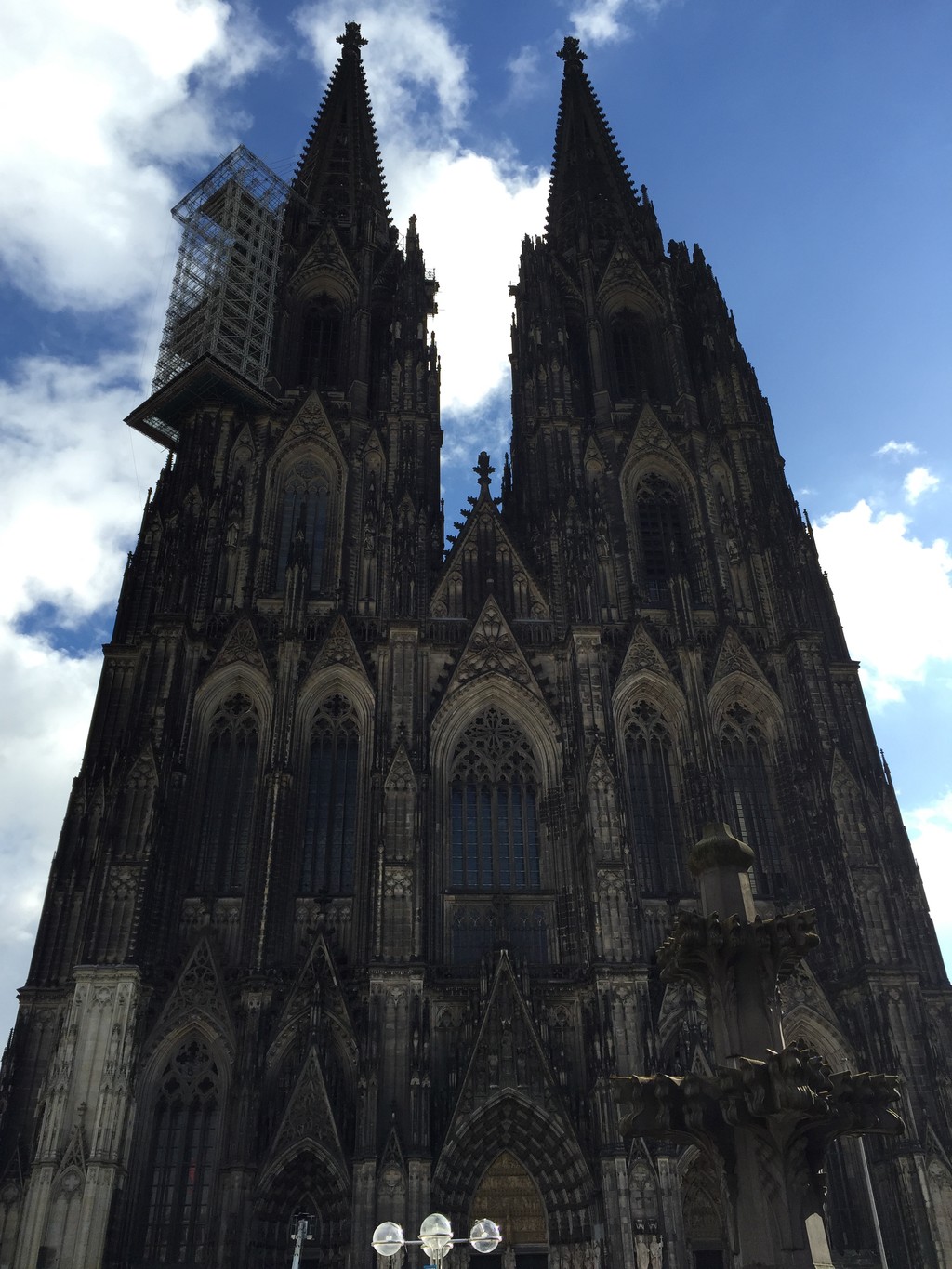
Something interesting about this masterpiece is the legend of the Magic Kings. Behind the altar is the Magic Kings' treasure, where, according to the legend, the relics of Melchor, Gaspar and Baltasar are located, that where brought over from Milan. This relic is a piece of precious metal work from the Middle Age made by the French artist, Nicolas Verdu.
This gothic jewel is situated in the heart of Cologne's Old Town, and receives more than 6 million visitors per year. Without a doubt, it's worthwhile making a visit to appreciate the building's impressive front and to see how it rises towards the sky.
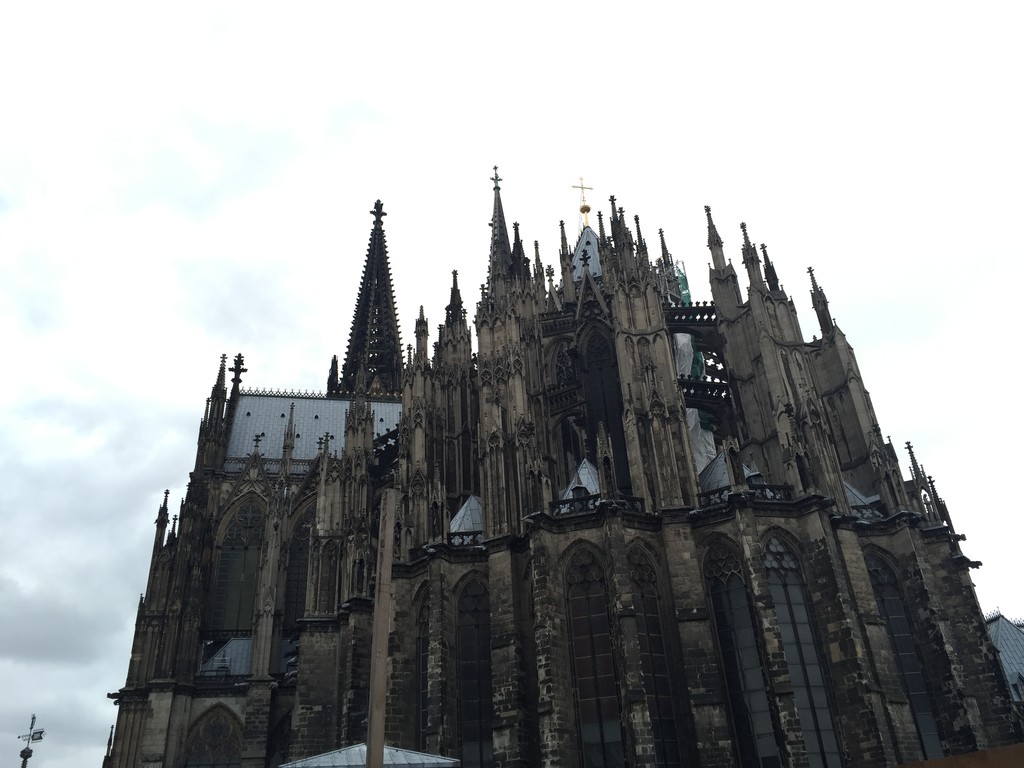
Photo gallery
Content available in other languages
- Español: Kölner Dom, la Catedral de Colonia
- Français: Kölner Dom, la cathédrale de Cologne
- Italiano: Kölner Dom, la Cattedrale di Colonia
Anyone who comes to Cologne...
Cologne is a very multi-faceted city, that lies on the Rhine in West Germany. It is so multi-faceted because it has something to offer everyone. Cologne is on one hand a historical city, with a historical city center, but on the other hand it is a very modern city, considered as one of the media centers of Germany.
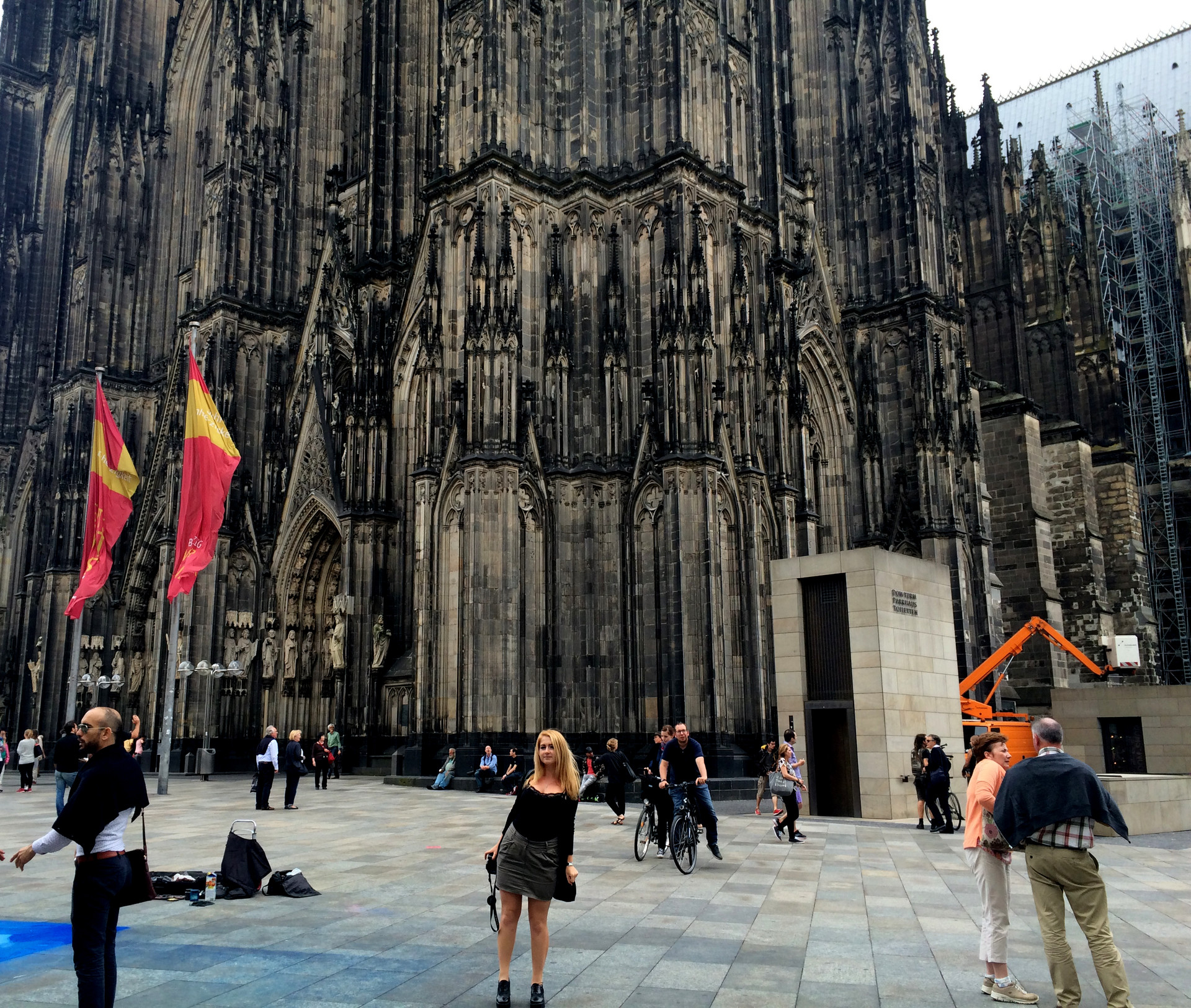
The city's landmark will catch the eye of anyone who comes to Cologne, who has not yet heard of this world-famous monument: The Cologne Cathedral. Barely escaping destruction in the second world war, this edifice has blossomed into a true tourist magnet. I will not spend many words on the building itself, because you can easily find all the data about it on the internet or you can find out yourself if you personally visit -- which I heartily recommend. It is only said here that it is an uplifting feeling to stand at the foot of this man-made wonder and look up awestruck. This feeling increases even more if you can tear yourself away from the outer scene and enter the interior. Even as a non-religious person, you can not resist a certain religious exultation upon seeing the liturgical ornaments and objects in the interior, not to mention the sublime feeling of finding oneself in such an immense building. The fact that this building was only created by humans seems unimaginable, and at the same time you become aware of its importance at the time of its construction. Last but not least, you can climb to the highest point of the cathedral -- which naturally can be a little tiring -- and enjoy the view of the city there.
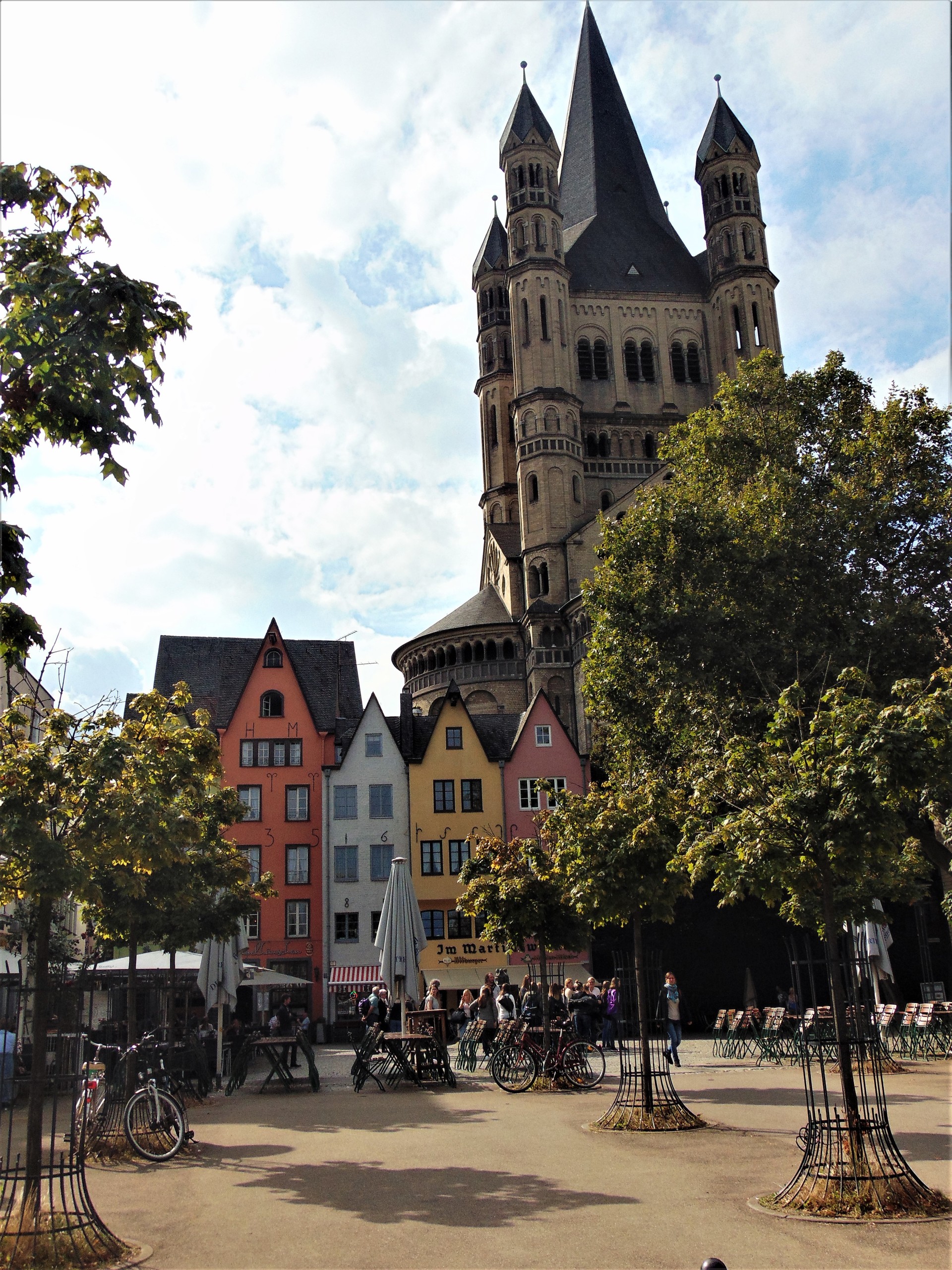
If you leave the cathedral, there are several destinations that should be visited, but none rival the cathedral itself. Near the cathedral, on the way to the Rhine, is the Old Market, that the people of Cologne call "Alder Mart" and it is the perceived center, the heart of the city. The old facades of the houses that surround the market transport you to another time, and you can imagine in your mind's eye what must have happened in earlier times. There is usually a lively hustle and bustle, but you can find several pubs where you can refresh yourself or eat something. The city's own beer "Kölsch", particularly of the brand "Reichsdorfer", is to recommend. There is little to say about the culinary side. There is the usual, and of course you should try Bratwurst when you are in Germany. All in all you should not eat too much, because there is still the chocolate museum, which you should not visit on a full stomach.
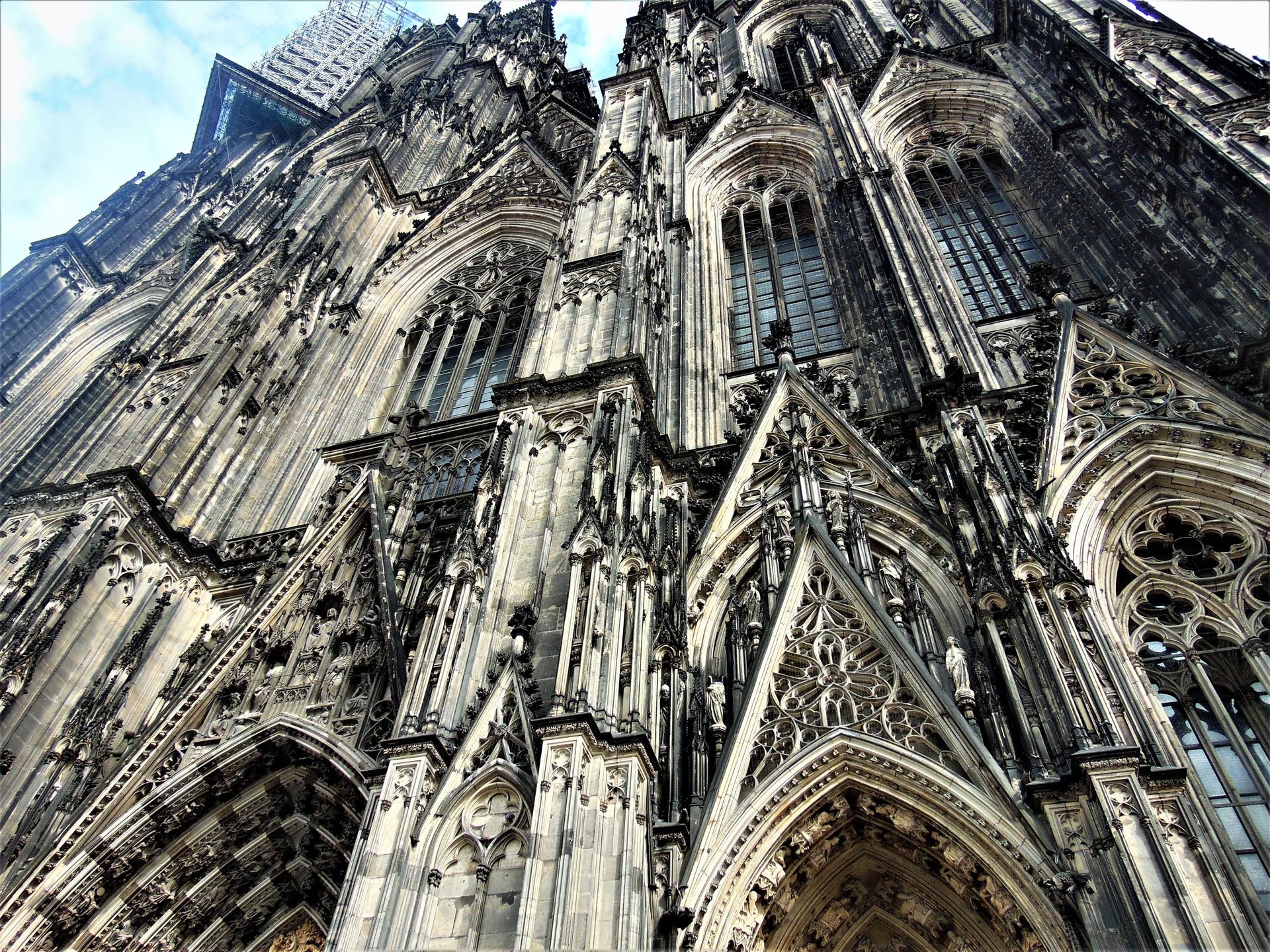
Also the culture lovers come to Cologne. There is a philharmonic and art museums, and I highly recommend the Ring, which is truly worth a visit and offers many new insights and impressions. Furthermore, there is the Roman-German museum, which I think is the best museum in Cologne. Even for people who are not interested in history, this visit is a must, because such a detailed depiction of earlier German history is seldom seen and above all the presentation of replicas invites you to deal more deeply with the topic.
If you visit all of these attractions, you can still wander around in the Cologne city center, where you can find something in the many shops.
This should be enough for a small look into Cologne. Everyone should visit Cologne when they happen to be in West Germany. It is truly worth it. I am no lover of big cities, but I count Cologne among my favorite places in Germany. Cologne can easily compete with the big cities of Europe and probably ranks highly among them -- at least in my personal ranking.
Kölle du bes e Jeföhl!

Photo gallery
Content available in other languages
- Deutsch: Wer nach Köln kommt ...
- Español: El que viene a Colonia...
Rate and comment about this place!
Do you know Kölner Dom (Cathedral)? Share your opinion about this place.

